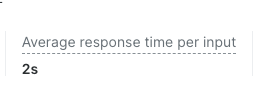What is Easy Scraper?
What is Easy Scraper?
Easy Scraper is a user-friendly data collection tool that allows users to gather information from various online platforms using predefined scrapers. It’s designed to simplify the scraping process, making it accessible to users with minimal technical expertise.
How do I get started with Easy Scraper?
How do I get started with Easy Scraper?
To get started, log into your account, navigate to the Easy Scraper section, select a scraper, input your parameters, and run the scraper. You can then get the data in your preferred format.
How do I use Easy Scraper?
How do I use Easy Scraper?
Use Easy Scraper by selecting a scraper, adding your inputs, setting a result limit if necessary, choosing where to store the data, and starting the collection process. You can monitor and retrieve your data from the Logs tab.
What is the difference between the scrapers?
What is the difference between the scrapers?
Each scraper is designed to collect data from a specific domain. For example, the Amazon products scraper collects product information, while the LinkedIn profiles scraper gathers data from LinkedIn profiles. The specific inputs required and the type of data collected will vary depending on the domain.
Are there any limitations on the scrapers?
Are there any limitations on the scrapers?
Certain scrapers may have limitations based on the data source, such as rate limits or restricted data access. all limitations will be display on the specific scraper page, The system will notify you if any limitations are encountered during the scraping process.
What data formats does the Easy Scraper support?
What data formats does the Easy Scraper support?
The Web Scraper API supports data extraction in various formats, including JSON, NDJSON, JSON Lines, and CSV. Specify your desired format in the request parameters.
What are the rates for the Easy Scraper?
What are the rates for the Easy Scraper?
We charge based on records delivered from valid inputs. The rate per record depends on your subscription plan. Please check our pricing plans or your account details for specific rates.
How can I upgrade my subscription plan?
How can I upgrade my subscription plan?
To upgrade your subscription plan, go to the billing section of your dashboard and select the desired plan. For further assistance, contact our support team: you can do this from the Question Mark (?) button on the top right corner of your Control Panel, directly from this link: https://brightdata.zendesk.com/hc/en-us/requests/new, or by sending an email to [email protected].
How fast is the Easy Scraper?
How fast is the Easy Scraper?
The Easy Scraper response time is influenced by factors such as the load time of the target URL and the execution of user-defined page interactions. An indication of the avg response time per for each scraper can be found on the specific Scraper page.

How can i use your tools to access the same info in a user-friendly manner?
How can i use your tools to access the same info in a user-friendly manner?
For every API scraper, we also offer a no-code simple scraper, which you can leverage to retrieve the same data